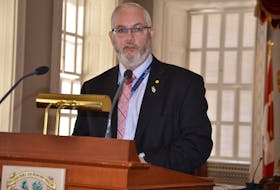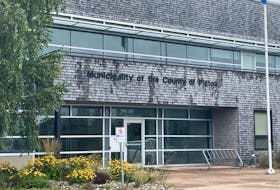HALIFAX – The number of Nova Scotians living in poverty is at its lowest level in decades.
The number of people with low incomes dropped by more than 7,000 to 64,000 in 2011, a decrease of 10 per cent over 2010, according to Statistics Canada.
That means about seven per cent of the population is considered to be living in poverty. This is the lowest percentage of low income Nova Scotians on record.
The number of children in low income households also improved, decreasing by 2,000 to 13,000, a drop of 13 per cent since 2010.
"Poverty remains a significant issue and finding solutions remains complex, but these most recent numbers show the province is heading in the right direction," said Denise Peterson-Rafuse, Minister of Community Services, in a news release.
A recovering economy, improving labour market conditions and government programs have contributed to higher employment and higher incomes. Between 2009 and 2011, the unemployment rate in the province dropped from 9.2 per cent to 8.8 per cent.
Since 2009, government has taken a broad-based approach to poverty reduction, investing more than $420 million for income supports training and employment, and more affordable and supportive housing.
The province also increased investments in the Poverty Reduction Credit, the Affordable Living Tax Credit, the Seniors Property Tax Rebate and the Nova Scotia Child Benefit.
"We have a larger proportion of seniors living in our community so the Seniors Property Tax Rebate is significant," said Wendy Knowlton, the executive director of the Annapolis Valley Family Resource Centre and a member of the Poverty Coalition of the Annapolis Valley, in the same release. "It enables repairs and upgrades that will keep seniors living in their own homes longer and this is positive."
Personal-use allowances also increased by seven per cent this year, putting more money in the pockets of individuals on income assistance.
In 2013, the minimum wage increased to $10.30 per hour, a 20 per cent increase since 2009. Nova Scotia's rate is the highest among the 10 provinces.
The poverty rate for seniors living in Nova Scotia is now 1.9 per cent, among the lowest in Canada.
"It's clear that this government is helping to make life better for our most vulnerable citizens, particularly people living on the streets, low-income families and seniors," said Peterson-Rafuse.
Housing is also a key component in reducing poverty. The province's first housing strategy, launched in May, will provide more affordable housing.
Over the past year, 200 homeless Nova Scotians were helped off the street and into more stable housing.
"The housing strategy includes some exciting prospects. Naturally, we have some questions about how these will work in our area, but there are some good and unique ideas," said Knowlton. "Our coalition is working to create a recognition that poverty reduction policies and strategies should recognize the different solutions needed in rural areas."
Compared with the rest of the country, Nova Scotia has the fifth lowest percentage of people living with low incomes, the same rate as Alberta.
The Statistics Canada calculation for low income cut-off is based on household size and community size. For 2011, the after tax low-income cutoff ranges from $12,629 for a one-person household in a small rural area to $30,871 for a four-person household in a community the size of Halifax Regional Municipality, which is between 100,000 and 500,000 residents.
The Nova Scotia highlights of the Statistics Canada report can be seen at http://novascotia.ca/coms/noteworthy/Decreasingpoverty.html.








